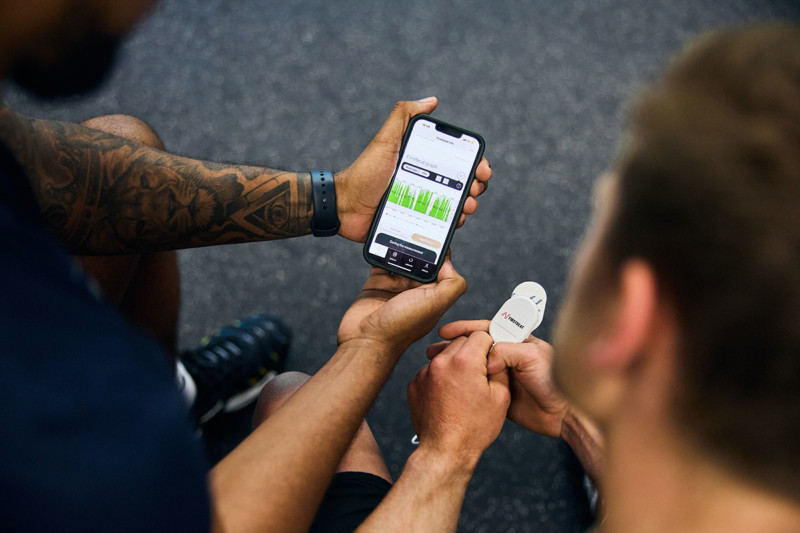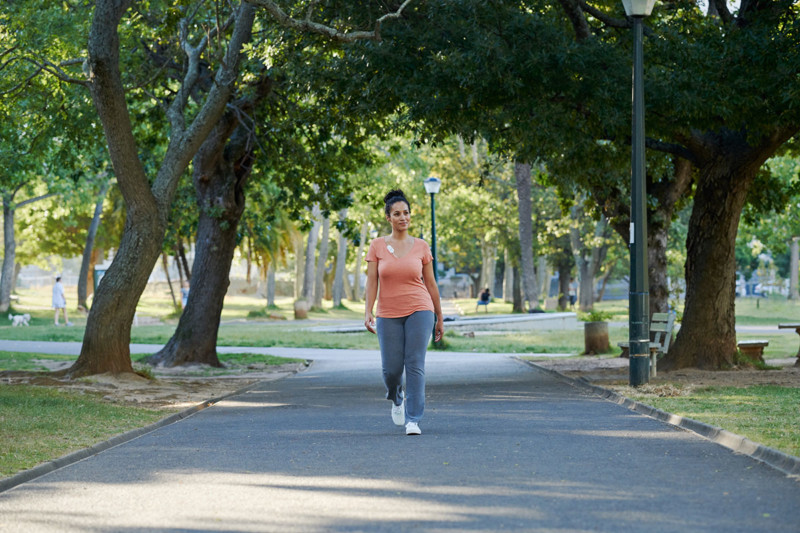
Restorative sleep is the basis of good health and performance – it helps the body recover from stress, physical exertion, and fatigue, whereas poor-quality or insufficient sleep predisposes us to cardiovascular diseases, mental health problems, and has a negative effect on cognitive functioning.
Sleep should be a key component in comprehensive health, fitness, and wellness coaching programs because better sleep will improve the likelihood that your clients can reach their lifestyle or fitness goals. The challenge is that it’s much harder to come up with a formula for great sleep than, for example, for increasing bicep strength or endurance.
In this blog, I want to discuss sleep from the viewpoint of how you, as a coach in any field, can help improve your client’s sleep habits – where to start, what added value sleep data can bring, and how to keep the focus on what’s most relevant.
Start With Getting the Right Amount of Sleep
The recommended duration of sleep for adults is 7-9 hours, and this is a great place to start because it is the most concrete aspect of sleep to address. Ask your clients to identify what is “enough sleep” for them and then ask if they are getting it most of the time.
If not, how can you help them change that mindset? Perhaps structure the evening a bit differently (stop watching Netflix 30 mins earlier…?) or give up something else to make time for sleep? Research shows strong connections between insufficient sleep and a multitude of health problems, so this step is an obvious starting point. Read more here.
In addition to sleeping enough, there are many ways to estimate or measure sleep quality. Without getting into the depths of sleep architecture or the world of sleep wearables here, suffice it to say that it can be easy to get confused with all the available sleep numbers and recommendations. Sure, they can help you understand your client’s sleep patterns better and be useful for monitoring progress, but if the coaching focuses too heavily on “sleep metrics”, it’s easy to lose sight of the bigger picture, which is what I will focus on in this blog.
The Foundation of Good Sleep is Built During the Day
I recommend an emphasis on concrete, actionable things. Start by helping your client understand that good sleep is strongly affected by our behaviors and habits during the day (how busy or stressed we are, amount of caffeine or alcohol, eating rhythm, exercise habits, evening routine, etc).
This is where Firstbeat Life data and the journal that is integral to it can be very helpful (see examples in Figs 1 and 2). Seeing your client’s activities during different kinds of days, and the sleep that follows will make it easier for you and your client to identify behaviors that maintain heavy stress levels and impact sleep negatively, versus those that lower stress and boost recovery. You might need to look at and discuss these kinds of things:
- Is your client’s stress level heavy all day, or are there moments of recovery (green in the graph)? What did your client do when there was recovery?
- Could the workday be re-structured to allow stress levels to sometimes drop? Have your client experiment with different work patterns, recovery exercises, or physical activity breaks.
- Is the day passive and spent indoors, or does it include physical activity and exposure to daylight? What about the sleep schedule? A healthy circadian rhythm maintains energy while awake and sleep during the night – and your client can influence this by sticking to a regular sleep rhythm, staying active during the day, getting some daylight, and slowing down in the evening. Day and sleep hormones are also at play, and you can read more about that in our previous blog post.
- If the stress levels peak in the evening (see Fig. 1; high red bars), determine what might have caused it (stressful activity, worries, alcohol, caffeine, too busy, too much stimulation/electronics). We are all different, and data allows us to build personalized, individually meaningful habits and sleep routines instead of one-size-fits-all solutions.
- A perfectionist mind wants to “do it all”, but we can help clients develop a kinder attitude toward themselves. Some find it helpful to write down what’s ahead the next day, to get some closure on the day, whereas others need to have a specific cutoff time for chores and to-dos. Other useful strategies to lower stress and promote recovery include classical or meditation music, meditation routines, breathing exercises, reading, or light stretching.

Fig. 1. Workday includes some recovery (green moments), but stress level increases in the evening (high red bars) and stays elevated a large part of the sleep period. A coach can help the client explore what might have caused this and then make some adjustments.

Fig. 2. A nicely structured day with early exercise and light activity outdoors (blue bars), followed by relaxing activities in the evening help bring down the stress levels and promote good-quality sleep.
Taking a Personalized Approach is Better Than Aiming for Perfection
Hectic, stressful days are ok now and then, but if we have constant stress all day, the body can get stuck in a fight or flight state. After a while, we might not be able to recover, even during sleep. As coaches, we can help clients understand this and highlight the importance of finding a healthy balance – learning to slow down strategically and give the body a chance to get restorative sleep.
Let’s also acknowledge that some people are naturally better sleepers than others. We need to be sensitive to the fact that good sleep is not a given, and not assume that all sleep problems are caused by poor lifestyles or behaviors. There might also be health- or age-related issues at play.
If your client is struggling with sleep and their sleep data is not looking great, you can help them create good habits but also be a bit more merciful towards themselves and understand that there is no one definition of good sleep. There are no tricks to guarantee great sleep, but a persistent attitude and personalized approach will improve the odds that your client can get better sleep more often – and improve their well-being and resilience in the process.
Accurate physiological data allows you to understand your clients’ wellness status and identify potential health risks and make better coaching decisions. It helps you to deepen and lengthen your client relationships. Learn more about Firstbeat Life.
If you liked this article, you should subscribe to our newsletter.
You might also be interested in

How to Utilize Wellness Data to Become a Highly Successful Personal Trainer
The UK’s top PTs explain how data is integral to offering a better service and growing your business. The Personal Training landscape has changed significantly in the last few years….

New Study Reveals that the Firstbeat Fitness Level Walk is a Valid Tool for Cardiorespiratory Fitness Evaluation in Clinical Populations
Cardiorespiratory fitness (measured as VO2max) is an expression of the body’s ability to deliver and utilize oxygen for energy during physical exercise. It reflects the interplay between respiratory, cardiovascular, and…

How to Keep Your Stress Levels in Check When Hybrid Working
The COVID-19 pandemic forced millions of people into remote work and we have learned that it’s possible to do a lot of jobs and work tasks remotely. Hybrid working, which…


